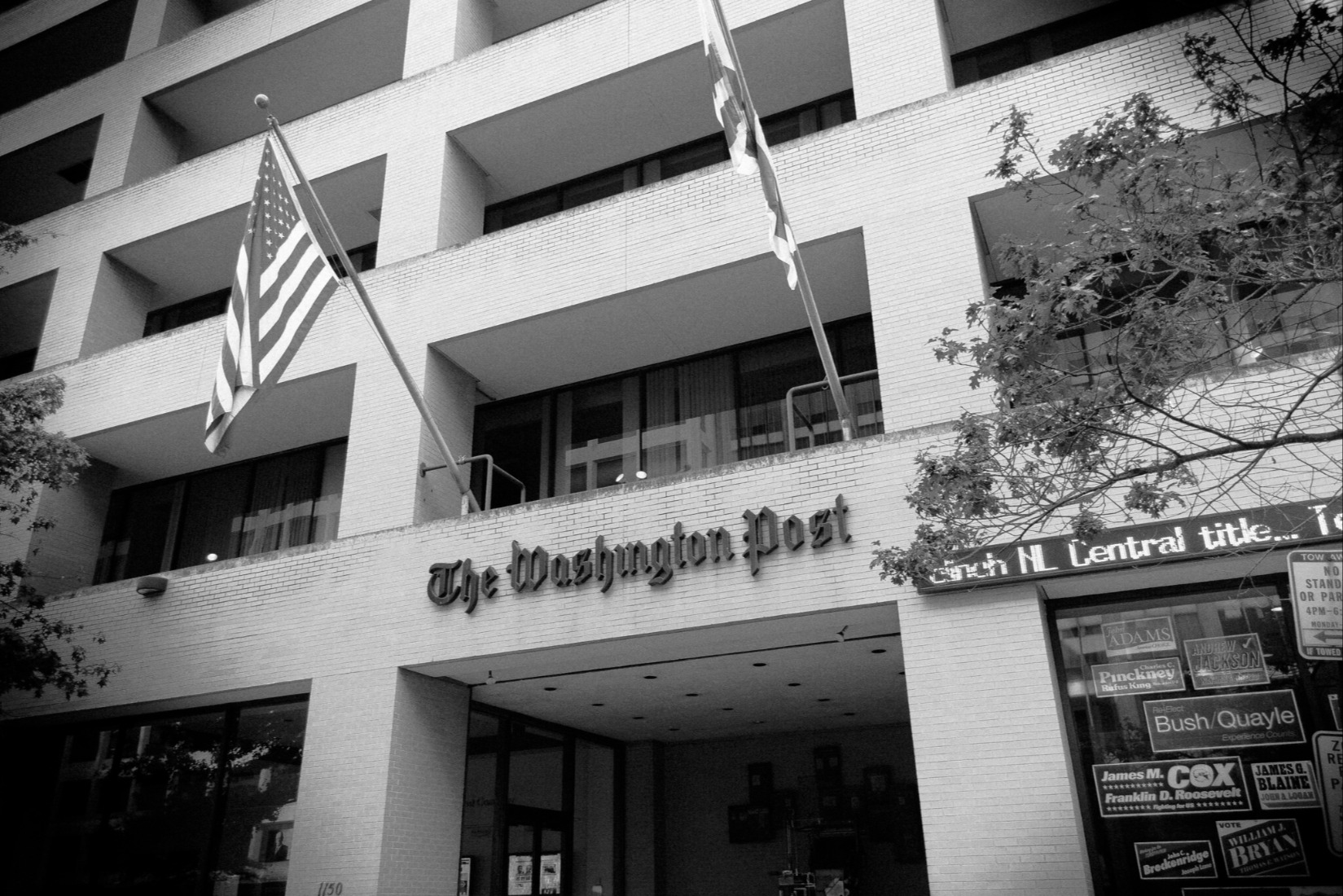The Judge Dugan Case Is More Complicated Than It Seems
Some see the prosecution of the Wisconsin circuit court judge as vindicating the rule of law, and others as an attack on it. They’re both wrong.
.jpg?sfvrsn=d0f071b6_5)
Published by The Lawfare Institute
in Cooperation With

On Friday, the Federal Bureau of Investigation arrested Milwaukee County Circuit Judge Hannah Dugan based on allegations that Dugan misdirected federal agents who had come to the Milwaukee County Courthouse to arrest a man on an immigration warrant. The Trump administration quickly claimed—in the words of Attorney General Pam Bondi—that Dugan’s arrest demonstrated that “[n]obody is above the law, not even a judge.” Nearly just as quickly, the administration’s critics asserted that the “obvious purpose” in arresting Dugan was “to intimidate and threaten all judges, state and local, across the country.”
The rush to take sides between whether Dugan’s arrest vindicates or erodes the rule of law tends to ignore how the federal criminal justice process operates and fails to engage with the specific facts that the government has thus far alleged, and whether those facts plausibly establish that Dugan violated any federal criminal statutes beyond a reasonable doubt. That analysis shows this prosecution to be more complicated than either camp seems ready to acknowledge. Those championing the prosecution must confront the government’s hasty investigation and unusual decision to charge the case through a criminal complaint. But those criticizing the prosecution must confront facts in an affidavit that set out a nontrivial case that Judge Dugan unlawfully obstructed justice and concealed a person from arrest.
Background to Judge Dugan’s Arrest
The facts relied on in this analysis derive entirely from the affidavit submitted in support of the criminal complaint that was the basis for Judge Dugan’s arrest. A criminal complaint, unlike an indictment, does not require a grand jury determination that probable cause supports the alleged criminal conduct. That the relevant facts at this point in this case stem entirely and only from a criminal complaint merits two observations, each of which tends to undermine one of the two existing narratives about the case.
First, as is typical for many affidavits that underlie arrest warrants, the affidavit is signed by an FBI special agent (although it was probably written partially, if not entirely, by a federal prosecutor, as is often the case). That means that the facts here reflect only the government’s account of what happened. To those who would claim that the facts in the affidavit establish a clear violation of law, it is fair to respond that Judge Dugan has not had any opportunity to test the veracity of those facts, let alone tell her side of the story.
Second, on the other hand, a neutral magistrate judge assessed the FBI agent’s affidavit and independently determined that probable cause existed that Judge Dugan’s conduct violated two federal statutes. That is a standard and legally required step for obtaining and executing a federal arrest warrant. So it’s not quite accurate to claim that federal agents embarked on a lawless escapade designed solely to intimidate; Dugan’s arrest occurred only after a federal judicial officer concluded that the allegations in the affidavit provided a legal basis for the FBI to carry out the arrest.
With those caveats out of the way, consider the facts according to the criminal complaint. On March 18, a man named Eduardo Flores-Ruiz was charged in Milwaukee County Circuit Court—where Judge Dugan presides—with multiple counts of domestic-abuse battery resulting in physical pain or injury. Federal Immigration and Customs Enforcement (ICE) agents learned about Flores-Ruiz’s state criminal charges and determined that he had been removed to Mexico in 2013 and that he was not lawfully in the United States. On April 17, ICE agents obtained a warrant for Flores-Ruiz’s arrest for immigration purposes. (As becomes relevant later, an immigration warrant is known as an “administrative warrant” because it issues from—in the words of the complaint—an “authorized immigration official,” whereas other warrants—such as to conduct searches or to arrest individuals on criminal charges—issue from judges and are thus known as “judicial warrants.”) They knew that Flores-Ruiz was scheduled to attend a hearing in front of Judge Dugan the following day, April 18, and they made plans to arrest Flores-Ruiz after the hearing in a public area of the Milwaukee County Courthouse.
As the criminal complaint notes, it is not unusual for federal authorities to make arrests in state and local courthouses when the arrestee has a scheduled hearing there. The arrestee must typically pass through security screening, which lessens the risk of injury to law enforcement, the public, and the arrestee. The criminal complaint notes that at least twice before Flores-Ruiz’s case federal authorities had carried out arrests in the Milwaukee County Courthouse of individuals not lawfully present in the country.
On the morning of April 18, six federal agents dressed in plain clothes arrived at the Milwaukee County Courthouse. The group included one ICE agent, one Customs and Border Patrol (CBP) agent, two FBI agents, and two Drug Enforcement Administration (DEA) agents. The ICE agent and CBP agent identified themselves to a security guard and explained their intention to make an arrest; the security guard contacted a Milwaukee County police officer, who requested that the federal agents wait until after the hearing to make the arrest. As this was “standard practice,” the ICE and CBP agents agreed and were allowed to “proceed unescorted” to the public hallways outside of Judge Dugan’s courtroom: Courtroom 615. The other four agents (from FBI and DEA) had already arrived there.
While the ICE and CBP agents were discussing with the Milwaukee County police officer, one of the FBI agents identified himself to Judge Dugan’s courtroom deputy and informed the deputy that the federal agents intended to make an arrest after the hearing. At the courtroom deputy’s request, the agents agreed to wait outside the courtroom.
As the agents were waiting outside Courtroom 615, a woman—later identified as an attorney from the Wisconsin State Public Defender’s Office (and identified in the complaint as “Attorney A”)—approached the group and took pictures of them. One of the DEA agents (“DEA Agent B” in the complaint), however, was “inconspicuously seated away from the group” and thus not included in the picture.
Flores-Ruiz’s case was one of eight criminal cases scheduled for a pretrial hearing before Judge Dugan on the morning of April 18. The federal agents saw Flores-Ruiz arrive outside Courtroom 615, greet his attorney, and proceed inside, where Dugan was already on the bench conducting proceedings in another case. Also inside Courtroom 615 were victims from Flores-Ruiz’s criminal case.
At some point, Attorney A entered the courtroom and alerted Dugan’s clerk about the federal agents (whom the attorney had photographed). After the clerk spoke with Dugan, Dugan “became visibly angry, commented that the situation was ‘absurd,’ left the bench, and entered chambers.” The complaint does not identify who gave this description of the judge, although from context it appears to be the courtroom deputy. An assistant district attorney (identified in the complaint as “Attorney B”) was in Courtroom 615 preparing for the morning’s docket while all of this happened. He heard someone announce, “ICE is here.” Before Dugan left the courtroom, Attorney B heard her say that she intended to contact the chief judge. It is unclear whether Dugan communicated with the chief judge before confronting the federal agents waiting outside Courtroom 615, which the criminal complaint next describes.
According to the agents, Dugan and another judge (“Judge A” in the complaint), both dressed in robes, approached the group waiting in the public hallways outside Courtroom 615. The complaint states that “[w]itnesses uniformly reported that Judge Dugan was visibly upset and had a confrontational, angry demeanor.” When the ICE agent told her, in response to her question, that he was not there for a court appearance, Dugan told him that he “would need to leave the courthouse.” The ICE agent then explained that he was there to make an arrest, so Dugan asked whether he had a judicial warrant. He had an administrative warrant, the ICE agent explained, but Dugan said he needed a judicial warrant. When the ICE agent argued that he was in a public space with a valid immigration warrant (which he offered to show Dugan), Dugan “demanded” that the agents “report to” the chief judge’s chambers. Judge A then escorted five of the six agents—not DEA Agent B, who had been “inconspicuously” seated away from the rest of the group and “had not been recognized” as an agent—to the chief judge’s office, while Dugan returned to her courtroom.
Two things then apparently happened in parallel, according to the criminal complaint. In the chief judge’s chambers, Judge A continued interacting with the federal agents (other than DEA Agent B), and eventually the chief judge (who was not in the building) spoke by phone with the ICE agent. During their telephone conversation, the chief judge said he was “working on a policy” for ICE enforcement actions within the courthouse and emphasized that no such actions should take place in courtrooms or other private locations. When the ICE agent asked whether an arrest in the hallway was permissible, the chief judge said a hallway was a public location. While that conversation was taking place, the courtroom deputy approached two federal agents (DEA Agent A had left the chief judge’s chambers to join his “inconspicuous” colleague, DEA Agent B) waiting outside Courtroom 615 and told them that Judge Dugan was “pushing” Flores-Ruiz’s case, which the DEA agents understood to mean expediting it.
Several witnesses described what happened inside Courtroom 615 while these other conversations occurred. Judge Dugan “forcefully motioned” for Flores-Ruiz’s attorney to approach, and the attorney then appeared to engage in what the courtroom deputy thought was an off-the-record conversation about the next court date while Flores-Ruiz sat in the jury box, which one witness described as unusual given Dugan’s past statements that the jury box was reserved only for the jury. Dugan then escorted or directed Flores-Ruiz to exit through a nonpublic jury door and continued with other proceedings. Attorney B—the assistant district attorney there to handle the criminal cases, including Flores-Ruiz’s—only later realized that Flores-Ruiz’s case was never called that morning.
At some point after leaving Courtroom 615 through a nonpublic passageway, Flores-Ruiz and his attorney reappeared in the public hallway. There, the DEA agents from “different vantage points” saw them “walk briskly” toward an elevator bank—not the one closest to Courtroom 615—to exit the courthouse. The DEA agents alerted the other federal agents, and one of them, DEA Agent A, got onto the elevator with Flores-Ruiz and his attorney. The FBI agents “scrambled to locate” Flores-Ruiz, which ultimately resulted in Flores-Ruiz fleeing, a “foot chase” for the “entire length of the courthouse,” and Flores-Ruiz’s apprehension and arrest—all of which took place while the ICE agent and the CBP agent were still speaking by phone with the chief judge.
Criminal Process
After what appears to be just six days of investigation—from April 18 until April 24—the federal government sought and obtained a criminal complaint for Judge Dugan. The criminal complaint alleges that the facts just described establish probable cause that Dugan violated two offenses: obstruction of justice, in violation of 18 U.S.C. § 1505, and concealing a person from arrest, in violation of 18 U.S.C. § 1071. The government’s decision to use a criminal complaint in these circumstances is unusual for several reasons.
First, a criminal complaint is most often used to obtain an arrest warrant in cases where agents and prosecutors are worried about either ongoing criminal conduct or risk to the public at large or, as is not infrequently true, both. Take a recent example. On the same day that Dugan was arrested, the U.S. Attorney’s Office for the Western District of Missouri announced that a day after a search of his house, a man was charged by criminal complaint for distributing and possessing child pornography. A criminal complaint under those circumstances is vitally important to ensure that the arrested individual can no longer continue to endanger child victims during the period it would take to secure an indictment from a grand jury.
It is hard to see how that rationale would apply in Judge Dugan’s case. Nothing in the criminal complaint suggests Dugan was involved in any kind of ongoing criminal conduct, let alone conduct that jeopardized the public at large. Even taken in a light most charitable to the government, the facts in the criminal complaint instead describe a judge unsympathetic to an effort by federal agents to enforce immigration laws in the Milwaukee County Courthouse. The complaint itself, however, notes that the chief judge was developing a policy for precisely such matters, and the criminal complaint nowhere suggests that Dugan would willfully resist such a policy once in place.
Second, a criminal complaint starts the clock on charges in a case that undoubtedly could benefit from additional investigative work. Once the federal government arrests an individual, it has by statute 30 days to file an information or obtain an indictment from a grand jury. And one of the offenses listed in the criminal complaint is felony obstruction of justice, which requires the government to seek an indictment from a grand jury. (The other listed offense, concealing a person from arrest, is a misdemeanor unless the person concealed had a warrant for a felony charge or had already been convicted of an offense, neither of which is the case here, as the government’s press release appears to recognize.) As discussed more below, there are a number of factual questions still outstanding and also no indication that the witnesses who spoke to the FBI testified under oath before a grand jury. In that respect, this case differs substantially from the prosecution of former Judge Shelley Joseph (also discussed below), in which federal authorities investigated for a year before seeking federal charges—by indictment, not through a criminal complaint.
Third, the move to quickly seek a criminal complaint in this case appears out of step with Justice Department policy. Under the Justice Manual, prosecutors must recognize “the fact that resort to the criminal process is not necessarily the only appropriate response to serious forms of antisocial activity.” Among the alternatives that prosecutors should explore is whether to refer matters to “licensing authorities or to professional organizations such as bar associations.” That appears to be exactly what happened—albeit after prosecutors dismissed criminal charges they had initially brought—in the just-mentioned case of Judge Joseph. It may be that after exploring alternatives to seeking criminal charges, the government would decide to press forward with prosecution nonetheless. But it is hard to take seriously the notion that prosecutors oversaw a complete investigation and engaged in a good-faith assessment of noncriminal alternatives to prosecution in a mere six days.
Viable Criminal Charges?
The government’s process in rushing to obtain a criminal complaint and publicly arresting a sitting state-court judge with no apparent criminal history raises troubling questions about the abuse of prosecutorial power and potential intimidation of judges. And yet. The facts set out in the criminal complaint—again, facts that a neutral magistrate judge determined established probable cause of criminal violations—raise questions of their own about Judge Dugan’s conduct. There’s a nontrivial argument—based on the untested factual assertions in the complaint—that Dugan violated a federal obstruction statute. And the argument that Dugan violated the misdemeanor prohibition against concealing a person from arrest seems likewise colorable.
Start with obstruction. The criminal complaint charges one count of 18 U.S.C. § 1505, which (as relevant here) makes it unlawful to corruptly “influence[], obstruct[], or impede[]” a “pending proceeding” before a federal department or agency. The term “corruptly,” which appears in many obstruction statutes, has a statutorily prescribed definition for § 1505: It means “acting with an improper purpose, personally or by influencing another, including making a false or misleading statement, or withholding, concealing, altering, or destroying a document or other information.” The prosecution theory would presumably be that Dugan acted with improper purpose by misdirecting agents and facilitating Flores-Ruiz’s (attempted) escape from the courthouse, and that that misdirection obstructed the federal agents’ efforts to effectuate an arrest, which constituted a “pending proceeding” before ICE (and potentially the partnering agencies like CBP, FBI, and DEA).
The government charged the same statute in the prosecution of Judge Joseph in Massachusetts. The case bears many similarities. Joseph presided over the state-court arraignment of an undocumented immigrant whom an ICE agent had come to arrest following the proceeding. Joseph directed the ICE agent to leave the courtroom with assurances that the immigrant would be released to the courthouse lobby. Instead, Joseph turned off the courtroom recording system, devised a plan for the immigrant to exit through the back door of the courthouse, and implemented the plan with her courtroom deputy, who was also charged with obstruction offenses. The criminal charges were ultimately dismissed for reasons unrelated to the merit of the legal theories.
Two potential obstacles could stand in the way of prosecuting Judge Dugan under § 1505. The first, which could perhaps be surmounted with additional investigation, is whether the government can prove beyond a reasonable doubt that Dugan acted “corruptly.” Did she believe that the federal agents did not have the authority to enforce immigration laws, including executing an immigration arrest warrant, in the Milwaukee County Circuit Courthouse? Did she speak with the chief judge to confirm or disconfirm that view? Did she have a good-faith belief that the federal authorities needed a “judicial” instead of an “administrative” warrant? Interviews or grand jury testimony from the courtroom deputy, Dugan’s clerk, Judge A, the chief judge, Flores-Ruiz and his attorney, among others, could shed light on whether Dugan acted with “improper purpose.” But even if Dugan believed the federal agents did not have the lawful authority to make the arrest in public areas in the courthouse—a claim that seems dubious in light of the chief judge’s comments to the ICE agent—she appears to have directed the rescheduling of Flores-Ruiz’s criminal matter without informing the assistant district attorney and then attempted to sneak Flores-Ruiz and his attorney through a nonpublic passageway, potentially alerting them about ICE’s presence, in what appears to be an effort to evade federal officers who were trying to execute a valid immigration arrest warrant. That may or may not be enough to persuade a jury that Dugan acted “corruptly.” Either way, it is not conduct befitting a judge entrusted with ensuring compliance with the law.
Additional investigation could also elucidate a puzzling question that bears both on whether Dugan acted corruptly and on whether she sought to “conceal” Flores-Ruiz, which is relevant for the second charge in the criminal complaint. When Dugan sent Flores-Ruiz and his attorney out the jury door, did she know or expect they would arrive back in the public hallway? (The answer to this question may depend as much on the physical layout of the courthouse as it does on what was in Dugan’s mind.) But even assuming that Dugan knew or assumed that Flores-Ruiz and his attorney would reappear in the public hallway, did she believe that federal agents were there waiting? Recall that the criminal complaint describes how Dugan and Judge A directed the federal agents to the chief judge’s chambers, overlooking the “inconspicuous” DEA Agent B, who remained in the hallway and whose status as a federal agent Dugan apparently did not detect. If Dugan knew or expected that Flores-Ruiz would encounter federal agents after leaving through the nonpublic jury exit from her courtroom, it is difficult to see how she intended to obstruct the arrest. But if she thought—even mistakenly—that the agents were instead in the chief judge’s chambers and that the coast was clear for Flores-Ruiz to leave the courthouse undetected, the case for obstruction (and concealing an arrestee, discussed below) is considerably stronger.
A second potential obstacle is whether the arrest of Flores-Ruiz is a “pending proceeding” before ICE. Section 1505 does not define the term, and courts of appeals have rejected government arguments under a different obstruction statute that the term “official proceeding” encompasses criminal investigations. Dugan might argue that the same reasoning applies to the term as used in § 1505. But courts have by contrast held that an “administrative investigation” is a proceeding for purposes of § 1505, including the federal appellate court to which any appeal of Dugan’s case would go.
To mitigate any appellate risk on a charge under § 1505, the government could also charge one count of obstruction of justice under 18 U.S.C. § 1503. (The government is not limited to the charges in the criminal complaint when seeking an indictment before the grand jury.) Under § 1503’s so-called omnibus clause, a person violates the law by corruptly influencing, obstructing, or impeding (or “endeavor[ing]” to influence, obstruct, or impede) the “due administration of justice.” For purposes of § 1503, the term “corruptly” is arguably broader than under § 1505: It requires proof that the defendant acted “with the purpose of wrongfully impeding the due administration of justice.” And the term “administration of justice” is likewise capacious: “the governmental process of investigating, determining, and enforcing the legal rights of persons.” Although the same additional investigative steps outlined above would be appropriate to buttress the “corruptly” element for a charge under § 1503, the government’s case that Dugan corruptly obstructed—or at least endeavored to obstruct—the due administration of justice when she misdirected federal agents and sought to facilitate Flores-Ruiz’s surreptitious exit from her courtroom would and should merit serious consideration from a jury.
The same is true for a violation of 18 U.S.C. § 1071, which makes it unlawful to “harbor[] or conceal[] any person for whose arrest a warrant or process has been issued under the provisions of any law of the United States, so as to prevent his discovery and arrest, after notice or knowledge of the fact that a warrant or process has been issued for the apprehension of such a person.” The government would have to prove three elements to establish a violation of § 1071: (a) Dugan’s knowledge of a federal warrant for Flores-Ruiz’s arrest; (b) that Dugan harbored or concealed Flores-Ruiz; and (c) that Dugan intended to prevent Flores-Ruiz’s discovery and arrest. The facts as presented in the criminal complaint clearly establish Dugan’s knowledge of the federal warrant, even if Dugan and the ICE agent sparred over whether it mattered if the warrant was “judicial” or “administrative.” The parties would surely argue about whether Dugan “concealed” Flores-Ruiz; one older case defines the term as “to hide, secrete, or keep out of sight.” Dugan’s “pushing” of Flores-Ruiz’s case, if done to move him off the schedule of hearings, and her sending of Flores-Ruiz and his attorney out through a nonpublic passageway appear aimed at keeping him “out of sight.” Finally, Dugan’s actions seem designed to prevent the federal agents from arresting Flores-Ruiz, and the fact that she may have believed that the federal agents were not justified in executing the arrest—which may be true for many people harboring someone with a pending arrest warrant—does not appear material to the legal element.
***
The facts are obviously not all in for this case charged less than a week ago based on events that occurred less than two weeks ago. But one thing is clear. The competing narratives—that Judge Dugan represents a threat to the rule of law, or that her prosecution does—both sacrifice accuracy and nuance on the altar of political expediency.





